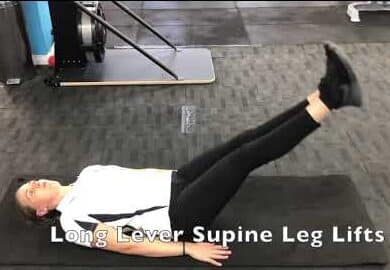Diabetes, find out how regular exercise can help treat and manage your type 2 Diabetes.
Can regular exercise help manage your Diabetes?

Diabetes is a chronic condition that affects millions of people worldwide. It’s characterized by high blood sugar levels resulting from insulin resistance or insufficient insulin production. While medication and dietary changes are often necessary components of diabetes management, regular exercise has emerged as a powerful and natural ally in the battle against this condition. In this blog, we’ll explore the compelling relationship between regular exercise and the treatment and management of Type II Diabetes.
How does exercise help with treating Diabetes?

There are numerous ways exercise can help with your general well-being and management of Diabetes. These include but are not limited to the following;
1. Improved Insulin Sensitivity: Exercise helps your cells become more sensitive to insulin, making it easier for your body to use glucose for energy. This reduces the need for excess insulin, leading to better blood sugar control.
2. Blood Sugar Regulation: Physical activity promotes the uptake of glucose by muscle cells, lowering blood sugar levels. This effect can be especially beneficial for those with Type II Diabetes.
3. Weight Management: Exercise helps with weight loss or weight maintenance, a crucial factor in diabetes management. Shedding excess pounds can improve insulin sensitivity and glycemic control.
4. Cardiovascular Health: Diabetes increases the risk of heart disease. Regular exercise strengthens the heart, reduces blood pressure, and improves cholesterol levels, reducing cardiovascular risk factors.
What are some of the Benefits of Regular Exercise with Diabetes?

Regular exercise offers a multitude of benefits for individuals with Type II Diabetes:
1. Better Glycemic Control: Exercise can lower A1C levels (average blood sugar over time), reducing the risk of complications associated with high blood sugar.
2. Weight Loss and Management: Physical activity aids in achieving and maintaining a healthy weight, which is crucial for diabetes management.
3. Enhanced Cardiovascular Health: Exercise improves heart health, reducing the risk of heart disease—a common complication of diabetes.
4. Increased Energy Levels: Regular exercise boosts energy, helping individuals with diabetes feel more active and alert.
5. Stress Reduction: Exercise is an excellent stress reliever, which is important because stress can impact blood sugar levels.
Understanding the Connection between Exercise and Diabetes
Regular exercise and Type II Diabetes have a profound connection. Exercise affects blood sugar levels, insulin sensitivity, and overall health in several ways:
- Improved Insulin Sensitivity: Exercise helps your cells become more sensitive to insulin, making it easier for your body to use glucose for energy. This reduces the need for excess insulin, leading to better blood sugar control.
- Blood Sugar Regulation: Physical activity promotes the uptake of glucose by muscle cells, lowering blood sugar levels. This effect can be especially beneficial for those with Type II Diabetes.
- Weight Management: Exercise helps with weight loss or weight maintenance, a crucial factor in diabetes management. Shedding excess pounds can improve insulin sensitivity and glycemic control.
- Cardiovascular Health: Diabetes increases the risk of heart disease. Regular exercise strengthens the heart, reduces blood pressure, and improves cholesterol levels, reducing cardiovascular risk factors.
What are the Benefits of Regular Exercise?
Regular exercise offers a multitude of benefits for individuals with Type II Diabetes comprising of but not limited to the below:
- Better Glycemic Control: Exercise can lower A1C levels (average blood sugar over time), reducing the risk of complications associated with high blood sugar.
- Weight Loss and Management: Physical activity aids in achieving and maintaining a healthy weight, which is crucial for diabetes management.
- Enhanced Cardiovascular Health: Exercise improves heart health, reducing the risk of heart disease—a common complication of diabetes.
- Increased Energy Levels: Regular exercise boosts energy, helping individuals with diabetes feel more active and alert.
- Stress Reduction: Exercise is an excellent stress reliever, which is important because stress can impact blood sugar levels.
Current Exercise Guidelines;
The latest research recommends those with Diabetes follow the below guidelines;
| Aerobic Exercise | Resistance Exercise | Flexibility | |
| Frequency | 3-7 days/week | Min of 2 non-consecutive / week, preferably 3 days/week | >2-3 days/week |
| Intensity | Moderate (40-60% Vo2 to Vigorous (60-80% Vo2) | To the point of discomfort | To point of discomfort |
| Time | Minimum 150min / week of Moderate to Vigorous Intensity (40-90% Vo2) | 1-3 sets, 10-15 reps for at least 8-10 exercises, training to fatigue | Hold for 10-30sec, 2-4 reps |
| Type | Prolonged, large muscle group exercises | Any – Ideally compound large muscle groups | any |
Exercise Safety Tips & Considerations;
As with any exercise plan, it is important to consider all medical history and your current health circumstances and seek professional guidance when and where possible. Below are some considerations to keep in mind when you are exercising with Diabetes;
Remember to Be Safe and check Your Blood Glucose Levels
Regular exercise helps to lower circulating blood glucose levels. When you exercise, the sensitivity of Insulin within your body increases, increasing your muscle cells’ ability to uptake the glucose from the bloodstream and store it within the muscles. However, it is also important to keep in mind that physical activity will have a different effect on your blood glucose level depending on several different factors, including how long you were physically active, how much energy you expended, exercise intensity, type of exercises performed and much more. Whilst these impact the outcomes, exercise can lower your blood glucose levels for up to 24 hours or more, making your body much more sensitive to insulin after your workout.
Choose the Right Type of Exercise
The type of exercise you choose is essential when managing type 2 diabetes. A combination of aerobic exercise and strength training is often recommended:
Aerobic Exercise:
- Aerobic exercises like walking, jogging, swimming, and cycling help improve your body’s sensitivity to insulin and reduce blood sugar levels.
- Aim for at least 150 minutes of moderate-intensity aerobic exercise per week or 75 minutes of vigorous-intensity exercise, spread out over at least three days.
- Include activities that you enjoy to make it a sustainable part of your routine.
Strength Training:
- Strength training exercises, such as weightlifting or bodyweight exercises, help build muscle, which can improve glucose metabolism.
- Incorporate strength training exercises at least two days a week, targeting major muscle groups.
Timing Matters
The timing of your exercise can influence its impact on blood sugar levels. To optimize glucose control:
- Avoid exercising during peak insulin activity times (usually 1-2 hours after meals) to reduce the risk of hypoglycemia.
- Consider exercising before meals or when your insulin levels are relatively stable.
- Experiment with different times of the day to find what works best for you.
Be Mindful of Foot Care
Diabetes can affect the nerves and circulation in your feet, making them more prone to injury. When engaging in physical activity, wear well-fitting, comfortable shoes and examine your feet regularly for blisters, sores, or signs of infection.
Getting Started
Embarking on an exercise routine doesn’t have to be intimidating. Here are some tips to help you get started:
- Consult Your Healthcare Provider: Before starting any exercise program, consult your healthcare provider to ensure it’s safe for your individual situation. We are here to help you with this, with a free online telehealth consultation to answer all your questions.
- Set Realistic Goals: Start with achievable goals and gradually increase the intensity and duration of your workouts.
- Choose Activities You Enjoy: Find activities you genuinely like to increase your chances of sticking with them. This could be walking, swimming, cycling, or even dancing.
- Monitor Your Blood Sugar: Keep track of your blood sugar levels before and after exercise to understand how your body responds. Adjust your routine as needed.
- Stay Consistent: Consistency is key. Aim for at least 150 minutes of moderate-intensity aerobic activity per week.
Conclusion
In conclusion, the benefits of exercise for treating type 2 diabetes cannot be overstated. It is a powerful and accessible tool that offers a multitude of advantages for those living with this chronic condition. Regular physical activity can help to:
- Control Blood Sugar Levels: Exercise enhances the body’s sensitivity to insulin, facilitating the regulation of blood glucose levels and reducing the need for medication.
- Improve Cardiovascular Health: By reducing the risk of heart disease, exercise not only helps manage diabetes but also protects against other associated health complications.
- Aid in Weight Management: Exercise supports weight loss or maintenance, which is crucial for many individuals with type 2 diabetes, as excess weight can exacerbate the condition.
- Boost Mood and Reduce Stress: Physical activity stimulates the release of endorphins, improving mental well-being and reducing stress, which is often linked to diabetes management.
- Enhance Quality of Life: A more active lifestyle can lead to increased energy, better sleep, and a higher overall quality of life.
- Prevent Complications: Regular exercise can lower the risk of diabetes-related complications such as neuropathy, retinopathy, and kidney disease.
It is important to remember that, while exercise is a powerful ally in managing type 2 diabetes, it should be pursued with care and attention. Consultation with a healthcare provider is crucial to developing a personalized exercise plan that suits your individual needs and capabilities.
Incorporating exercise into your daily routine is not just a strategy for treating type 2 diabetes; it’s a fundamental step toward a healthier, happier life. As with any significant change, the key is consistency. Whether you prefer a brisk walk, a swim, or a session at the gym, the long-term benefits of regular exercise for diabetes management make the effort well worth it. So, take that first step today, and let exercise be your partner in the journey to better health and well-being.
Written by Accredited Exercise Physiologist Kaitlyn Eisenhuth from Activ8 Health Club.
References: https://www.niddk.nih.gov/health-information/diabetes/overview/diet-eating-physical-activity















